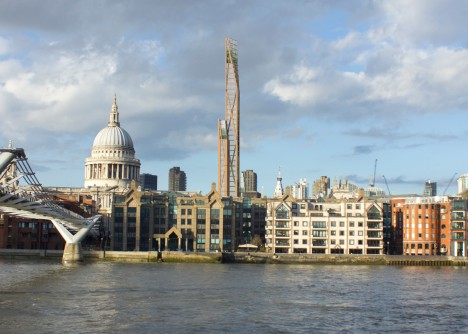 |
The FAA is proposing new rules related to flying drones in the US, and if you fly drones – including for photography – these rules WILL affect you. In this article, I’ll look at the implications of the proposed rule changes and how you can comment on them before the FAA makes them final.
The day after Christmas, the drone industry was finally gifted the long-awaited Notice of Proposed Rulemaking (NPRM) for the Remote Identification of Unmanned Aircraft Systems (drones), and what the Federal Aviation Administration (FAA) presented was a shock to many commercial and recreational remote pilots, alike. The government agency completely ignored recommendations from all 74 industry stakeholders that make up the Aviation Rulemaking Commitee (ARC), which is concerning.
The drone industry needs Remote ID, the concept that every drone should have a digital license plate, to move forward. Having a uniform system in place to identify unmanned aerial vehicles in national airspace is imperative for the safe operation of every aircraft sharing the skies. It will also enable more complex operations including flights at night, over people, and beyond visual line of sight (BVLOS). Remote ID is a step in the right direction but, unfortunately, the FAA has proposed costly, privacy-violating rules that will at first stifle, and then eventually crush, the potential of a burgeoning industry.
The FAA is proposing new rules related to flying drones in the US, and if you fly drones – including for photography – these rules WILL affect you.
I’m not going to summarize every section of the 87-page (the original was 319) document in one article as it goes far beyond the scope of what most DPReview readers want to digest. Instead, I’ll cover some of the main points of concern and, finally, offer suggestions and resources for leaving an effective comment for the FAA if you’re one of the nearly 1.2 million registered drone users in the U.S. If you’re prepared to make your voice heard, comment HERE.
What will potentially change?
The NPRM proposes that both manufacturers and UAS (unmanned aerial system) operators will be responsible for meeting Remote ID requirements. The main purpose is to connect a UAS with its owner. Capabilities are divided into two categories – “Standard Remote ID” and “Limited Remote ID.”
- Standard Remote ID ‘would be required to broadcast identification and location information directly from the unmanned aircraft and simultaneously transmit that same information to a Remote ID USS (UAS Service Supplier) through an internet connection.’ Most flights would be conducted under these terms.
- Limited Remote ID ‘would be required to transmit information through the internet only, with no broadcast requirements; however, the unmanned aircraft would be designed to operate no more than 400 feet from the control station.’
 |
| New rules under consideration by the FAA would have wide implications for drone operators in the US, including a requirement to broadcast personally identifying information when flying. |
Let’s pause for a moment and acknowledge that a drone will need a SIM card to operate under these new guidelines. Leading carriers such as AT&T, Verizon, and T-Mobile charge between $ 10 and $ 20 per month to add a device like a tablet or smartwatch to your data plan, so we can probably expect similar costs for a drone. If you’re operating more than one UAS, like many small businesses and some hobbyists, this adds up quickly. Major carriers also have gaps in the data coverage they provide. Many rural areas don’t get any signal, which will effectively limit where drones can be operated.
Key data, including the control station’s latitude, longitude, and altitude can be accessed by anyone from takeoff to landing, not just law enforcement. This is concerning because the general public will know exactly where a remote pilot is operating. If someone gets angry or doesn’t understand the nature of drone operations, they could easily harass or even attack the pilot. What’s more, the FAA estimates the remote pilot will be paying an additional fee of $ 2.50 per month to be connected with a USS.
The general public will know exactly where a remote pilot is operating. If someone gets angry or doesn’t understand the nature of drone operations, they could easily harass or even attack the pilot.
Drones need to be equipped with Remote ID in order to comply with the above draconian restrictions. The FAA is confident that most commercial aircraft can easily be outfitted to meet new requirements. Where things get especially cost-prohibitive involves equipping hobbyist or ‘amateur-built’ unmanned aircraft with Remote ID capabilities. The FAA doesn’t provide a solution for an affordable Remote ID kit. This means any UAS that is at least 50% constructed by a person will either need an independent solution constructed by that builder (a process that could potentially cost upwards of tens of thousands of dollars) or it will be restricted to an ‘FAA-approved identification area’ or FRIA.
Remote pilots have 12 months to suggest areas where drones can operate without Remote ID. The issue is many of these designated areas could be located tens to hundreds of miles away from your front door. There will likely be a charge similar to the Academy of Model Aeronautic’s (AMA) $ 75 current annual membership fee. Speaking of, the FAA also wants to overhaul the current registration process by requiring hobbyists individually register each drone instead of as a pilot. Some hobbyists own dozens of model aircraft. At $ 5 a piece, registration fees could potentially add up to hundreds of dollars.
What can you do?
The FAA is gathering comments from the public until March 2nd. The good news is, officials are required to read each and every one submitted by the deadline. However, if you take the AMA’s terrible advice, cut and paste one of their boilerplate comments into the form, and pass it off as your own, it will be disregarded. Unfortunately, I’ve already seen too many of the 12,000+, and counting, comments start off with ‘I am writing in response to the FAAs notice of proposed rulemaking on remote identification of unmanned aircraft systems (UAS). I am deeply concerned…’ Please, do not do this. Take the time to craft an original response.
 |
| Image shared with permission from Ryan J. Latourette |
As I mentioned earlier, I am basically summarizing some of the more pertinent concerns this NPRM brings up. If you’re looking to leave an impactful comment, I highly recommend checking out this in-depth resource from Pilot Institute. Skyward, a drone operations management platform, has a group of policy experts answering common questions in a webinar scheduled for Tuesday, February 18th. Joining drone-related Facebook Groups and forums and asking for guidance is another avenue to pursue, especially if reading and interpreting a lengthy legal document feels like a cure for insomnia.
It’s important to remember that this is a proposal. Nothing has been finalized. This is why every person that flies commercially, or for fun, must comment. It will still take the FAA several years to implement any changes. The more we, the public, can convince them that drones are beneficial, and provide viable alternatives to what has been suggested for Remote ID, the better chance we have of devising solutions that will work out for everyone.
Articles: Digital Photography Review (dpreview.com)















DJI urges public to submit comments on proposed FAA rules
Time is running out to weigh in on important polices that will impact the future of drone operations in the U.S. This Monday, April 15th at 11:59 PM, Eastern Standard Time, marks the final deadline for the public to submit comments on two separate Notices of Proposed Rulemaking (NPRM) issued by the Federal Aviation Administation (FAA).
An NPRM is issued, by law, from one of the government’s independent agencies when they wish to add, remove, or change a rule or regulation. The FAA, in this case, is subsequently required to review every single comment submitted over the 60-day period, respond appropriately to concerns raised, and either make or alter regulations.
To date, the Advanced NPRM for Safe and Secure Operations of Small Unmanned Aircraft, which includes guidelines for implementing payload and flying beyond visual line of sight, has received over 1,400 comments. DJI, a leader in civilian drones and aerial imaging technology, recently released an official statement on the alarming lack of commentary regarding the other NPRM, Operations of Small Aircraft Over People.
At the time the statement was published, less than 100 people weighed in on the latter NPRM. Since then, over 200 comments have been submitted regarding operations at night and over people. Since the FAA takes the public’s input into consideration when making its final decision, it is important to read through the entire regulation and provide thoughtful, fact-based responses to each issue posed.
‘Drone professionals know society has barely tapped the potential of this transformative technology, and we appreciate the FAA’s willingness to listen to the voices of people who use drones every day as they craft these necessary rules,’ said Brendan Schulman, DJI’s Vice President of Policy & Legal Affairs. ‘Given how vital these rules are for every professional drone pilot in America, it is surprising to see how few comments have been received. We strongly encourage professional drone operators and fleet operators to read the FAA’s proposals and submit their perspectives on how to ensure drones can handle expanded responsibilities safely.’
DJI plans to contribute comments to each of these NPRMs. Anyone and everyone can make a difference.
Articles: Digital Photography Review (dpreview.com)
Posted in Uncategorized